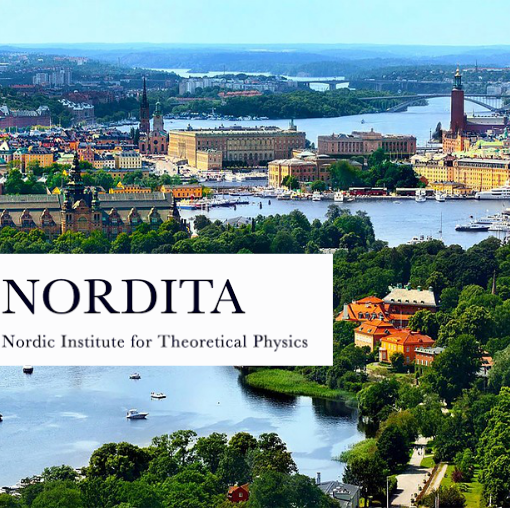November 11-13, 2024 @ NYU
726 Broadway, New York City
Room 940
Organizers: Michele Del Zotto, Constantin Teleman, Yifan Wang
SCHEDULE
MONDAY
| 14:00 – 14:30 ::: Lukas Müller | |
| 14:30 – 15:00 ::: Hector Peña Pollastri | |
| 15:00 – 15:30 ::: Thibault Décoppet | |
| coffee/tea and discussion | |
| 16:00 – 16:30 ::: Luuk Stehouwer | |
| 16:30 – 17:00::: Shani Nadir Meynet | |
| 17:00 – 17:30 ::: Pranay Gorantla |
TUESDAY
| 9:00 – 10:00 ::: Sakura Schäfer Nameki | |
| coffee break | |
| 10:30 – 11:30 ::: Mayuko Yamashita | |
| 11:30 – 12:30 ::: Anton Kapustin | |
| lunch break and discussions (coffee/tea 15:30) | |
| 16:00 – 17:00 ::: Theo Johson Freyd |
WEDNESDAY
| 9:00 – 10:00 ::: Dan Freed | |
| coffee break | |
| 10:30 – 11:30 ::: Pavel Etingof | |
| 12:00 – 13:00 ::: Xiao-Gang Wen | |
| lunch break and discussions | |
| 15:30 – 16:30 ::: Wine and cheese reception and discussions |
ABSTRACTS
Müller (PI)
A Higher Spin Statistics Theorem for Invertible Quantum Field Theories
The spin-statistics theorem asserts that in a unitary quantum field theory, the spin of a particle—characterized by its transformation under the central element of the spin group, which corresponds to a 360-degree rotation—determines whether it obeys bosonic or fermionic statistics. This relationship can be formalized mathematically as equivariance for a geometric and algebraic action of the 2-group $B\mathbf{Z}_2$. In my talk, I will present a refinement of these actions, extending from $B\mathbf{Z}_2$ to appropriate actions of the stable orthogonal group $O$, and demonstrate that every unitary invertible quantum field theory intertwines these $O$-actions.
Peña Pollastri (PI)
Exact Factorizations of fusion categories and the bicrossed product construction
In 2017 Gelaki introduced the notion of exact factorization of fusion categories, generalizing the notion of exact factorization of groups. We show some general results about the structure of such factorizations, their fusion rules and universal grading groups. Also we introduce a new construction, the bicrossed product, to produce new examples, including some exact factorizations involving Tambara-Yamagami categories and pointed categories.
Decoppet (Harvard U.)
Higher Verlinde Categories: The Mixed Case
In characteristic zero, the semisimple Verlinde categories are braided fusion categories constructed from quantum $\mathfrak{sl}_2$ at a root of unity. These categories have found many applications to low-dimensional topology, for instance, via the Reshetikhin-Turaev construction. I will explain how to construct the positive characteristic analogues of these categories, which are generally not semisimple, and discuss their fundamental properties.
Stehouwer (Dalhusie U.)
2-Hilbert spaces and extended unitarity
Hilbert spaces have two levels of equivalence; linear isomorphism and unitary isomorphism. The fact that 2-Hilbert spaces have three levels gives 2-Hilb the structure of a higher dagger category. This provides extra structure to the category of topological line operators in unitary theories, generalizing the fact that point operators form a *-algebra.
Meynet (Uppsala U.)
Emergent Non-Invertible Symmetries — The Adjoint QCD Example
After reviewing some general properties of the renormalization group (RG) flow for quantum field theories (QFT), I will describe how the recently descovered non-invertible symmetries can be used to study theories at strong coupling. I will illustrate these facts using (3+1)-dimensional Adjoint QCD with two flavors as an example. This theory can be obtained by mass deforming a pure N=2 super Yang-Mills theory. Relaying on supersymmetric results, dynamical abelianization and monopole condensation, one obtains an infrared (IR) phase characterized by an CP1 sigma model. In this scenario, the IR phase has an emergent non-invertible symmetry, which is matched with the non-invertible symmetry of the IR CP1 phase. This result illustrate how an emergent non-invertible symmetry can be used to provide a bridge connecting gauge theories at strong coupling and their IR via dynamical abelianization.
Gorantla (Chicago U.)
Duality-preserving deformation of 3+1d lattice Z2 gauge theory with exact gapped ground states
I will talk about a deformation of the 3+1d lattice Z2 that preserves the Wegner duality of the self-dual point. Surprisingly, there is a frustration-free point along the deformation where there are nine exact ground states (on a periodic cubic lattice): one of them is a trivial product state, whereas the rest are the topologically ordered ground states of the 3+1d toric code! Moreover, the gap at this point can be proved analytically. I will also briefly discuss generalization to lattice ZN gauge theory and what the phase diagram should look like for any N. Based on 2409.10612 with Tzu-Chen Huang.
Schafer-Nameki (Oxford U.)
Categorical Landau in 1+1d and 2+1d
Using the Symmetry TFT we systematically study the phases (gapped and gapless) of 1+1d and 2+1d systems with fusion 1-/2-categories.
Yamashita (PI)
Genuine refinements of elliptic genera
There is a classical construction of elliptic genera for SU-manifolds, which assigns Jacobi forms to SU-manifolds, and physically related to non-chiral 2d N=(1, 1) sigma models. In this talk, I explain my ongoing work with Ying-Hsuan Lin to give homotopy-theoretical refinements to it. The domain becomes “Topological Jacobi Forms (TJF)”, which is a spectrum (in homotopy theory) being developed by an ongoing work of T. Bauer and L. Meier. TJF refines the ring of Jacobi forms, just as TMF does for modular forms. In view of the Segal-Stolz-Teichner program, it is very natural to expect such a refinement of elliptic genera. The same strategy produces many variants of twisted equivariant TMF-valued genera including those from Sp-manifolds and Spin-manifolds. Having such refinements, we can detect torsion elements in the bordism groups, as well as deduce nontrivial divisibility results of characteristic numbers. In this talk I explain the motivation and construction, as well as why such refinements are more interesting beyond the classical elliptic genera.
Johnson Freyd (Dalhusie U. and PI)
The unitary cobordism hypothesis
A *dagger category* is a category equipped with extra “unitarity” data: among its isomorphisms, some are marked as “unitary”; to each 1-morphism, there is an “adjoint” 1-morphism, and this assignment sends unitary (but not general!) isomorphisms to their inverses. If a monoidal higher category has duals, it is interesting to ask for a choice of duality functor for which the units and counits are adjoints; whereas duality functors are unique up to contractible choice, so-defined “unitary duality” functors are not. I will explain a higher-categorical generalization of these ideas, and explain how, for any stable tangential structure H, a construction of Freed and Hopkins makes the extended bordism category Bord$_n^{H(n)}$ into a dagger symmetric monoidal n-category with unitary duality. This category satisfies a *unitary cobordism hypothesis*: whereas nonunitary functors Bord$_n^{H(n)} \to \mathcal{C}$ are classified by $H(n)$-fixed points in $\mathcal{C}$, *unitary* functors are classified by fixed points for the stablized group $H(\infty)$. This talk is based on joint work in preparation with Cameron Krulewski, Lukas Mueller, and Luuk Stehouwer.
Freed (Harvard U.)
Anomalies and quiches
Together with Greg Moore and Constantin Teleman we introduced an abstract notion of symmetry in QFT–quiches–analogous to abstract groups and algebras in other contexts. This leads to a natural question: How is the notion of an ‘t Hooft anomaly captured in the quiche framework? In joint work with Colleen Delaney, Julia Plavnik, and Constantin we address this question and also give applications to zesting of fusion categories. The first part of the talk will be a general discussion of anomalies in QFT.
Etingof (MIT)
Lie theory in tensor categories with applications to modular representation theory
Let $G$ be a group and $k$ an algebraically closed field of characteristic $p > 0$. Let $V$ be a finite dimensional representation of $G$ over $k$. Then by the classical Krull-Schmidt theorem, the tensor power $V^{\otimes n}$ can be uniquely decomposed into a direct sum of indecomposable represen- tations. But we know very little about this decomposition, even for very small groups, such as $G = (\mathbb Z/2)^3$ for $p = 2$ or $G = (\mathbb Z/3)^2$ for $p = 3$. For example, what can we say about the number $d_n(V)$ of such summands of dimension coprime to $p$? It is easy to show that there exists a finite limit $d(V) := \lim_{n\to \infty} d_n(V)^{1/n}$, but what kind of number is it? For example, is it algebraic or transcendental? Until recently, there was no techniques to solve such questions (and in particular the same question about the sum of dimensions of these summands is still wide open). Remarkably, a new subject which may be called “Lie theory in tensor categories” gives methods to show that $d(V)$ is indeed an algebraic number, which moreover has the form
$$ d(V) = \sum_{1 \leq j \leq p/2} n_j(V)[j]_q,$$
where $n_j(V) \in \mathbb N$, $q := \exp(i \pi /p)$, and $[j]_q := (q^j − q^{-j})/ (q−q^{−1})$. Moreover,
$$ d(V\oplus W ) = d(V ) + d(W ), \qquad d(V \otimes W ) = d(V )d(W ),$$
i.e., $d$ is a character of the Green ring of $G$ over $k$. Furthermore, $d_n(V ) \geq C_V d(V )^n$ for some $0 < C_V \leq 1$ and we can give lower bounds for $C_V$. In the talk I will explain what Lie theory in tensor categories is and how it can be applied to such problems. This is joint work with K. Coulembier and V. Ostrik.
Wen (MIT)
From sub-algebra of local operators, to generalized symmetry, and to their topological phases on lattice
TBA.
Kapustin (Caltech)
Topological invariants of gapped states as obstructions to gauging
Recently, an approach to constructing topological invariants of gapped ground-states of lattice systems has been developed in our joint work with N. Sopenko. In this talk I will explain an interpretation of these invariants as obstructions to gauging, i.e. to promoting a symmetry to a local symmetry. To formalize the notion of a local symmetry on the infinitesimal, I define a “local Lie algebra” as a pre-cosheaf of Lie algebras with additional properties. In the case of lattice systems, this pre-cosheaf lives on a Grothendieck site which encodes the large-scale geometry of the lattice.
PARTICIPANTS
Ibrahima Bah
Maissam Barkeshli
Francesco Benini
Federico Bonetti
Lakshya Bhardwaj
T. Daniel Brennan
Christian Copetti
Augustina Czenky
Michele Del Zotto
Tudor Dimofte
Thibault Decoppet
Pavel Etingof
Dan Freed
Pranay Gorantla
Jonathan Heckman
Ken Intriligator
Theo Johnson-Freyd
Anton Kapustin
Liang Kong
Zohar Komargodski
Vassily Krylov
Tom Mainiero
Shani Meynet
Ruben Minasian
Greg Moore
Lukas Muller
Kantaro Ohmori
Hector Pena-Pollastri
Konstantinos Roumpedakis
Ingo Runkel
Sakura Schafer-Nameki
Claudia Scheimbauer
Shu-Heng Shao
Noah Snyder
Luuk Stehouwer
Pelle Steffens
Will Stewart
Constantin Teleman
Jackson van Dyke
Kevin Walker
Yifan Wang
Xiao-Gang Wen
Mayuko Yamashita
Bowen Yang




